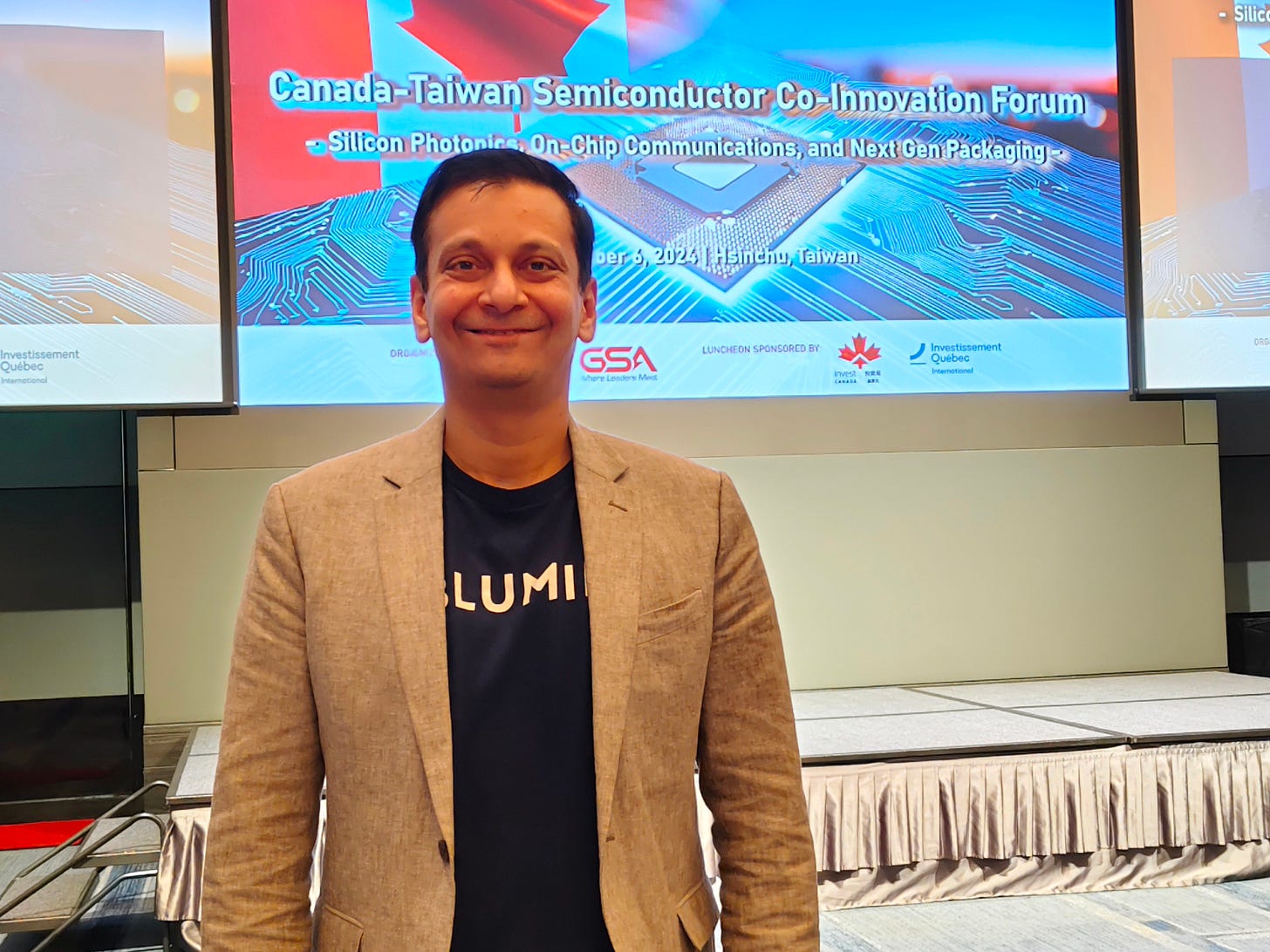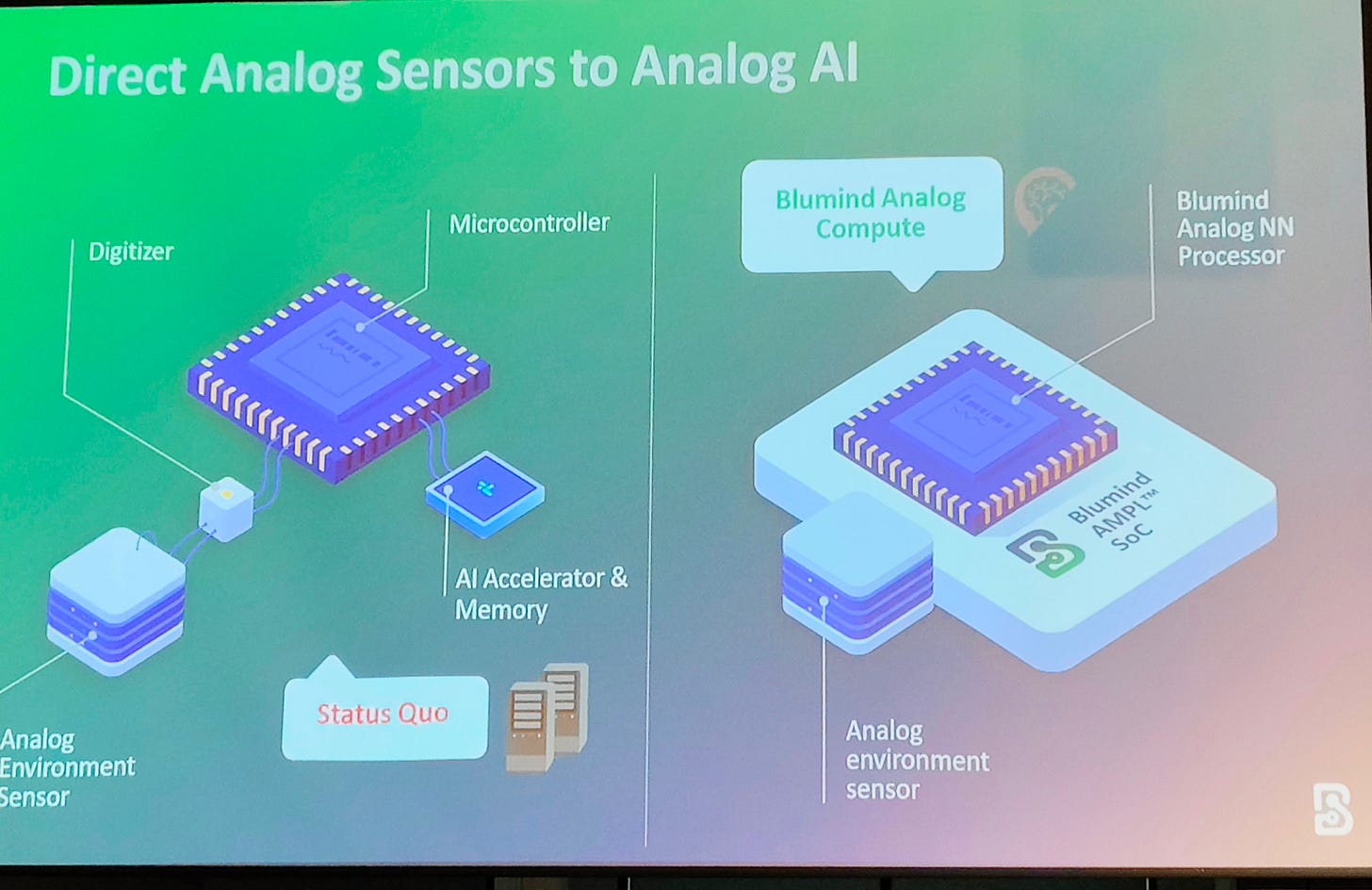Blumind: Revolutionizing Power Efficiency in Environmental Sensing and Machine Learning
Sensors detect analog environmental parameters and relay this information to the digital world, where it undergoes immediate digitization before being sent to a digital processor. However, this traditional approach can be incredibly wasteful.
Blumind, a Canadian startup, is changing this landscape by demonstrating the value it brings to clients through significant power reductions across various applications.
Blumind Co-Founder and COO Niraj Mathur said it is implementing essentially a brain-inspired topology for neural network processing based on its patented technology. They also provide temporary ultra-low power storage to store activations between neural network layers.
“There are no data converters in the Blumind architecture because we eliminated analog-digital conversions which are extremely inefficient,” said Mathur. “We are doing this using standard cost-effective CMOS process technology, therefore, there're no special masks in the fabrication process, keeping costs very low and reliability very high.”
Mathur said Blumind starts at the device level, where efficiency is critical because these applications often require battery power. “We prioritize long battery life as well as thermal management, especially in use cases like smart glasses.” He explains, “If there's a large processor near your face, you don’t want it to generate excessive heat. These are the kinds of applications where our value proposition shines through.”
Blumind has strategically focused on automotive, smart home, wearables, and industrial applications to drive its growth.
Analog computing solution optimized for edge computing
Mathur demonstrated several cases to the audience, showing the value delivered by Bluminds solutions at the Canada-Taiwan Co-Innovation Forum held in Hsinchu in September.
For example, in natural language processing (NLP) and keyword spotting, Blumind has achieved approximately a 100x reduction in power consumption for neural network processing. The company is currently collaborating with a client on an audio application that involves keyword detection and classification. Using a conventional digital microphone and a standard microcontroller unit (MCU) for neural network processing, traditional methods consume around 400 to 500 microwatts of system power continuously. In contrast, Blumind’s solution brings this system power consumption down to about 25 microwatts in total, including the analog microphone.
One notable case study involves a major tire manufacturer aiming to make tires “smart.” Since tires are the only components of a vehicle that come into direct contact with the road, they can provide valuable insights into road conditions, tire wear, and rotational needs. By integrating neural networks with accelerometers, Blumind’s processor can continuously analyze data from these sensors, effectively classifying the tire's operating environment.
In the realm of vision applications, such as face detection in smart cameras, Blumind will deliver a 100x improvement in power efficiency. Blumind is also addressing more complex workloads, including gesture recognition for augmented reality (AR), virtual reality (VR), and smart glasses, as well as object detection and classification for computer vision applications. In these scenarios, the company excels at minimizing power consumption while maximizing battery life and user experience — all without compromising accuracy.
Though primarily a semiconductor firm, Blumind has developed a comprehensive strategy to gain traction in the market by offering a complete solution encompassing not just its chips but the corresponding software environment and infrastructure as well. The company supports customers with training environments and data sets that enable users to efficiently train their networks using Blumind models in the cloud. Customers can then download these trained models onto Blumind’s silicon to achieve optimal results for their specific workloads.
Blumind’s offerings include software development kits (SDKs) complete with drivers, streamlining the deployment process for customers as they integrate these solutions into their applications. The company is building foundational technology for machine learning applicable to all inferencing workloads, and its technology is scalable to data centers in the future.
Latest Progress and Future Plans
Since the second half of 2023, Blumind has transitioned from research and development to commercialization. “We have developed a new audio and time series signal processor, which is currently in fabrication. We expect to launch this product to the market next year” Mathur stated.
He also emphasized Blumind’s openness to collaborating with foundries in Asia, noting that many clients prefer specific foundries and have requested such partnerships.
As Blumind prepares to initiate its Series A fundraising round, it is seeking strategic partners that can significantly impact the machine learning landscape. This focus on collaboration and innovation positions Blumind at the forefront of power-efficient solutions for AI processing.




